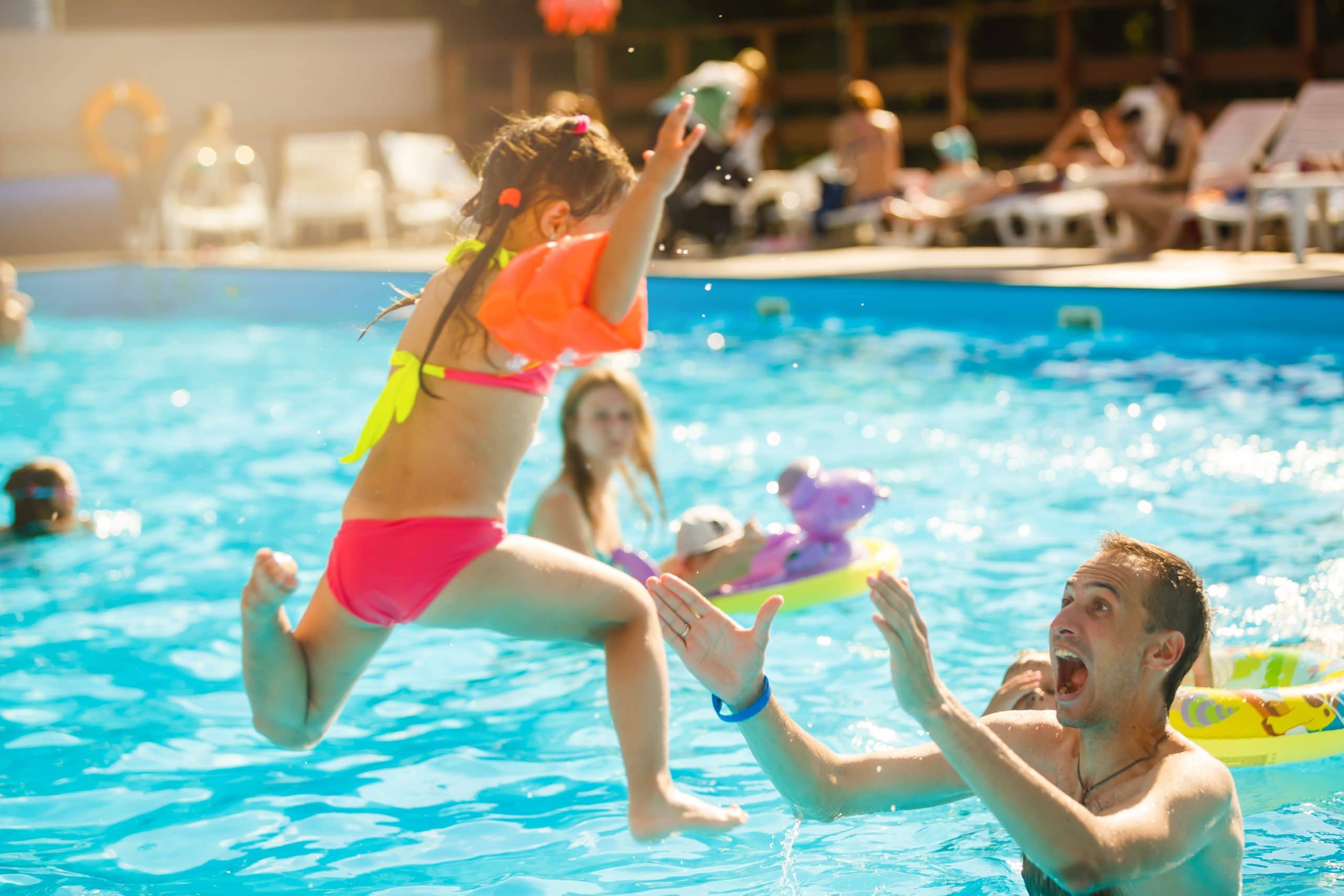
Water Safety Tips from a Pediatrician
With warmer weather on the horizon, it’s time once again to think about swimming, boating and other fun activities in and around the water. For many of us, that is what summer is all about. However, when it comes to water and children, safety has to come first.
To find out more, we spoke with Dr. Susan Frayer of Cameron Pediatrics. Dr. Frayer is double-board certified in pediatrics and emergency medicine, making her an expert in the field of child safety. She’s also the parent of four kids ranging in age from 11 to 20, so she’s very aware of the challenges of keeping children safe around water. These are her top recommendations.
Adult Supervision – At All Times
When it comes to water safety, the number one thing according to Dr. Frayer is having adult supervision. She explains that this means 100% of the time, without looking away at all. For emphasis, Dr. Frayer points out that the number one cause of accidental deaths for children from the ages of one to four is drowning. It only takes a moment for a child to drown. It is also important that adults who are responsible for watching the children are sober.
Adult supervision doesn’t stop at the lake. A one-year-old can drown in as little as two inches of water. So the idea of constant supervision applies to anywhere there’s water, such as baths and backyard kiddie pools.
She also stresses that adult supervision is important for all kids, even those with flotation devices on or those who have had swimming lessons.
Pool Rules
Whether it’s in a private backyard pool or a large city park, pools are a staple of summer fun. However, there are many rules that come along with that fun, too.
Private Pools. Of course, just like at the lake, constant adult supervision is an absolute must at home pools. If you have a pool at your home, there needs to be at least a four-foot fence surrounding it. Dr. Frayer emphasizes the importance of keeping the pool gate locked at all times when not in use. A toddler can get out of the house without anyone knowing and get into the pool if unlocked. Again, diligence and caution are the best rules to follow. If possible, the best plan of action is to install a pool cover. That helps ensure that kids cannot get into the water without adult supervision.
Public Pools. It might be easy to let your guard down at public pools, after all, most have lifeguards on duty. However, Dr. Frayer points out that they are usually teenagers who have dozens of children to keep an eye on. It’s up to you to ensure the safety of your child. After all, you care the most about them and will do the best job. She suggests staying within an arm’s length of your kids while they are swimming. Besides, joining them in the water will make for a fun day for the whole family.
Teenagers Are Still at Risk
Once children get to be teenagers, it is no longer necessary to be within an arm’s length at all times, but that doesn’t mean there’s no danger around water. The lake culture is often very accepting of alcohol. Whether parents know it or not, teens may be drinking around water. Dr. Frayer says that most drowning of teenagers involve alcohol. So, stay aware of what teens are doing. Make sure you warn them about the dangers of drinking and have a zero-tolerance policy about boating and drinking. In addition, talk to all the teenagers about their ability to swim, and insist on lifejackets for anyone who can’t swim – both in and around the water.
General Water Safety Guidelines
There are some easy things you can do to help keep everyone safe around water. For example, keep your phone nearby in case you have to call for help. Designate someone or a few people to be “on duty” so there’s no confusion about who is watching the kids. Get CPR certified. The class is offered at several places, including most Red Cross locations.
Dr. Frayer says to watch out for the unexpected, such as fast-moving water or rip tides in large bodies of water. You should also be careful around streams and retention ponds that you’ll find in many housing additions. Often there is no fence around these ponds, so you must warn children to stay away from them. You can add a fence to your own yard as an added deterrent.
Boats. If you have a boat, be especially careful when putting the boat into the water. It’s an exciting moment and children can run behind the boat or truck without being seen. Make sure you know where everyone is. Once on the water, always make sure you have lifejackets for everyone on the boat.
Reviewed by: Susan Frayer, Cameron Pediatrics
Dr. Frayer is a double board-certified specialist in pediatrics and emergency medicine with more than 15 years of experience. She is now accepting new patients. To make an appointment, call Cameron Pediatrics at 260-667-5690 or schedule an appointment online.
©2025 Cameron Memorial Community Hospital
416 E. Maumee Street, Angola, IN 46703
